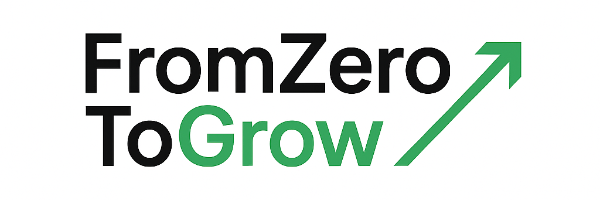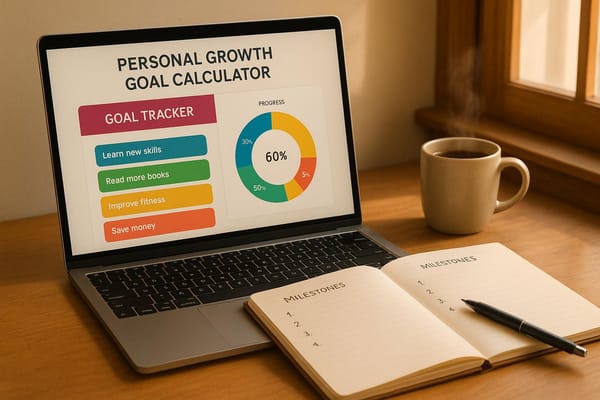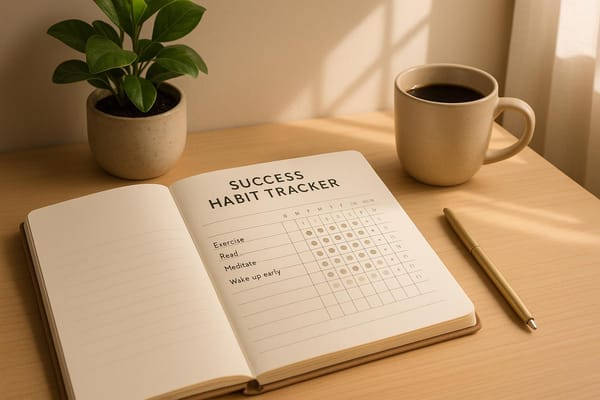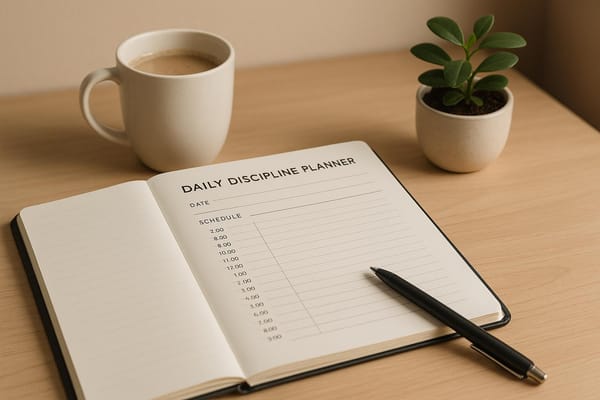How to Build Relationships at Networking Events
Learn how to foster genuine connections at networking events through preparation, active listening, and meaningful follow-ups for lasting relationships.

Building relationships at networking events isn't about collecting business cards. It's about creating meaningful connections that can shape your career. Here's how:
- Networking vs. Relationship Building: Networking is about initial introductions, while relationship building focuses on nurturing those connections for long-term value.
- Preparation Tips: Research attendees, craft a concise elevator pitch, and set clear goals to maximize your time.
- During the Event: Actively listen, ask engaging questions, and use confident body language to leave a positive impression.
- Follow-Up: Send a personalized message within 24–48 hours, referencing your conversation. Offer value by sharing resources or introductions.
- Maintain Connections: Regularly check in, engage on LinkedIn, and celebrate their achievements to keep relationships alive.
The key? Focus on quality over quantity. Build trust and stay consistent in your efforts to turn brief encounters into lasting partnerships.
How to Create Real Relationships at a Networking Event
Networking vs. Relationship Building: Key Differences
Networking and relationship building are two sides of the same coin in your professional journey. While they often overlap, understanding their differences can help you approach each with the right mindset and strategy.
What Is Networking?
Networking is all about making initial connections. Think of it as casting a wide net to meet professionals, exchange information, and open potential doors for future opportunities. It’s the kind of interaction that happens during brief conversations at events where you share your elevator pitch, learn about others’ roles, and exchange business cards or LinkedIn profiles.
The focus of networking is often short-term. You're looking for immediate opportunities - like a job lead, a potential client, or a quick collaboration. Conversations tend to stay on the surface, revolving around titles, companies, and current projects.
In essence, networking is about creating that first spark of connection. But while it’s great for opening doors, it’s relationship building that keeps those doors open.
What Is Relationship Building?
Relationship building takes things a step further. It’s the process of nurturing those initial connections into meaningful, long-term partnerships. This is where trust, shared interests, and genuine care for each other’s success come into play.
Unlike networking, relationship building isn’t just about professional exchanges. It’s about understanding the person behind the title - their challenges, goals, and even personal interests. These deeper connections often go beyond work, creating bonds that are harder to break and more rewarding over time.
The difference lies in the timeline. Networking might get you a quick introduction or opportunity, but relationship building ensures you have a network of people who actively support your growth and think of you when the right opportunities arise.
Why You Need Both
The key to a strong professional network is mastering both approaches. Networking helps you meet new people and expand your reach. Without it, you wouldn’t have the foundation to identify those worth building deeper relationships with.
But relationship building is where the real magic happens. A stack of business cards or a long list of LinkedIn connections won’t get you far if you don’t follow up or invest in those relationships. The people who will recommend you for a job, collaborate on a project, or mentor you are the ones with whom you’ve built genuine, lasting connections.
The most successful professionals strike a balance. They use networking to discover potential connections and relationship building to turn those connections into trusted allies. Together, these approaches ensure your professional network is both wide-reaching and deeply rooted.
How to Prepare for Networking Events
Preparation can make the difference between a productive evening and one that feels like a waste of time. Heading into a networking event unprepared often leads to missed opportunities and shallow conversations.
Develop a Genuine Mindset
Your mindset is the foundation of every interaction at a networking event. If you approach people with the sole intention of figuring out what they can do for you, it’s likely to show - and not in a good way. Instead, focus on learning about others and finding ways to connect.
Start by being truly curious about the people you meet. Instead of asking yourself, "How can this person help me?", shift your thinking to questions like, "What’s interesting about their work?" or "What challenges are they facing that I can relate to?" This small mental adjustment makes a huge difference. People can tell when someone is genuinely interested versus when they’re just ticking boxes on a networking agenda.
When you treat every attendee as a person with their own goals and stories, rather than just as a potential contact, you’ll find that conversations flow more naturally. This authentic curiosity not only helps you engage better but also makes it easier to remember the people you meet long after the event.
Create Your Elevator Pitch
An elevator pitch isn’t about selling yourself - it’s about sparking a conversation. The idea is to share just enough about what you do to pique someone’s interest and encourage them to ask questions. Think of it as a way to open the door to deeper discussions, not as a hard sell.
A strong elevator pitch has three key elements: who you are, what you do, and why it’s interesting. Keep it short - under 30 seconds - and avoid using industry jargon that could confuse people outside your field.
For example, instead of saying, "I’m a digital marketing strategist specializing in conversion rate optimization for SaaS companies," try something more relatable like, "I help software companies figure out why people visit their websites but don’t sign up." The second version is not only clearer but also invites follow-up questions like, "What’s usually the issue?" or "How do you figure that out?"
Practice your pitch until it feels natural. The best ones don’t sound rehearsed - they feel like part of a casual conversation. Prepare a few variations tailored to different audiences. The way you explain your work to someone in your industry might differ from how you’d describe it to someone unfamiliar with your field. This flexibility shows you care about being understood and can adapt to different people.
Research Attendees and Set Clear Goals
Many networking events share attendee lists, speaker profiles, or general information about who will be there. Use this to your advantage. Spend 15–20 minutes researching key individuals or companies you’re interested in. Knowing a little about someone beforehand can help you ask thoughtful questions and make a stronger impression.
For example, if the founder of a company you admire is attending, you could prepare a question about a recent project or talk they’ve given. If people from your target industry will be there, think about topics that might resonate with them. A little preparation goes a long way in making your interactions more meaningful.
It’s also important to set specific, achievable goals for the event. Instead of aiming to “meet as many people as possible,” try goals like “have three meaningful conversations” or “learn about two companies I’ve never come across before.” Having clear objectives helps you stay focused and gives you a way to evaluate whether the event was worthwhile.
Think about what you want to achieve in the next few months and consider who might help you get there. Are you searching for a mentor? Exploring a career shift? Looking for collaborators? When you know what you’re aiming for, it’s easier to recognize valuable connections when you meet them.
Write your goals down and keep them handy - on your phone, for instance. If you find yourself wandering or unsure of what to do next during the event, a quick glance at your list can help you refocus and make better use of your time.
Making Connections During the Event
When you're at the event, your preparation comes to life through the connections you make. Engaging in meaningful conversations and leaving a lasting impression can set you apart. This is where your groundwork pays off, guiding how you interact. Let’s dive into how listening and body language can help you connect on a deeper level.
Listen Actively and Ask Thoughtful Questions
Active listening is your superpower at networking events. Many people are so focused on what they'll say next that they miss out on forming genuine connections. When you truly listen, you immediately stand out.
Active listening means giving someone your undivided attention. Put your phone away, make eye contact, and use body language - like nodding - to show you're engaged. When they’re done speaking, summarize what they said to ensure you understood: "So, your main challenge is finding highly skilled candidates rather than just filling roles, right?"
Asking the right questions can turn small talk into a meaningful conversation. Skip the usual "What do you do?" or "Where do you work?" These questions often lead to generic answers. Instead, go for open-ended options like "What brings you to this event?" or "What’s been keeping you busy lately?" These questions encourage people to share what truly matters to them.
If you know something about their industry or role, dig deeper with specific questions: "How does working at [Company X] compare to your previous experience at [Company Y]?" or "What’s the team culture like in your department?"
"Most people love talking about themselves. Never feel guilty asking for a conversation. Your job will be to ask a lot of thoughtful questions and listen. The receiver will most likely be pleased to oblige." - Julia Korn, Contributor, Forbes
Follow-up questions are just as important. If someone mentions a tough project, ask what makes it challenging. If they’re excited about a change at work, find out what excites them most. These follow-ups show you’re genuinely interested and help uncover what’s important to them.
Use Body Language to Your Advantage
Your body language does the talking before you even say a word. First impressions are formed in seconds, and much of that comes down to how you present yourself.
Start with the basics: stand tall, keep your shoulders back, and smile warmly. An open posture - arms uncrossed and hands visible - makes you look approachable and confident. When speaking with someone, face them directly instead of scanning the room for your next connection. Confidence is contagious, and people will pick up on the energy you project.
"First impressions are extremely important, and if you make the wrong one, you may be memorable, but not in the way you had hoped." - Nancy Marshall, The PR Maven®
A good handshake can set the tone for your interaction. Aim for a firm but balanced grip, maintain eye contact, and smile. When introducing yourself, clearly state your first and last name, and repeat their name back to them: "It’s great to meet you, Sarah." This not only helps you remember their name but also shows you’re paying attention.
Don’t overlook small details like where you place your name tag - it should go on your right side so it’s visible during handshakes. This small touch makes it easier for others to remember your name and shows you’ve thought about the interaction from their perspective.
Maintain steady eye contact during your conversations, but don’t overdo it. Looking at someone while they’re speaking or when you’re making a key point conveys engagement. If direct eye contact feels uncomfortable, focus on an area between their eyebrows and nose - it feels like eye contact to them but may be easier for you.
Exchange Contact Information Naturally
Exchanging contact information can turn a casual chat into the start of a professional relationship. Timing matters - don’t rush to hand out business cards right away.
Start by building rapport. Focus on having a genuine conversation and finding common ground before discussing business or asking for contact details. The exchange should feel like a natural progression, not the main goal of your interaction.
"You can move on to discussing your goal (ie, an interview, etc.) only once you have established rapport, so you should not talk business first." - Toronto Metropolitan University (TMU)
When the moment feels right - usually after a meaningful exchange - suggest staying in touch. Say something like, "I’d love to continue this conversation. What’s the best way to reach you?" or "This has been great. Would you be open to grabbing coffee next week to chat more?"
Take the lead by asking for their contact information first. When they hand you their business card, take a moment to look at it, make eye contact, and comment on something specific: "This is a great design!" or "I didn’t realize your company has a Seattle office."
Be ready to adapt to their preferred method of contact. Some people prefer exchanging business cards, while others might want to connect on LinkedIn or swap phone numbers. Having multiple options ensures the exchange feels natural and convenient.
Afterward, jot down a couple of key points from your conversation - whether on their business card or in your phone. It could be a project they mentioned, a challenge they’re tackling, or a shared connection. These notes will make your follow-up more personal and memorable.
"Always remember networking is a two way relationship!" - Toronto Metropolitan University (TMU)
Lastly, think about how you can offer value to them. Maybe you know someone they should meet, have a resource they’d find useful, or can share insights on a challenge they mentioned. Approaching the exchange with a mindset of mutual benefit creates a stronger foundation for the relationship.
Following Up and Maintaining Connections
After an event, the real work begins: turning those brief introductions into meaningful professional relationships. A thoughtful follow-up strategy can transform a simple business card exchange into a lasting connection. It takes effort, but with the right approach, you can keep the momentum going and build relationships that matter.
Send Quick Follow-Up Messages
Timing is everything when it comes to follow-ups. Aim to send your first message within 24–48 hours. This keeps the conversation fresh and ensures you stand out while the event is still on their mind. People meet a lot of new faces at events, and waiting too long might mean your interaction gets lost in the shuffle.
Start with a subject line that’s specific and personal. Instead of a generic "Nice meeting you", try something like, "Enjoyed our chat about AI at the Marketing Summit, Sarah" or "Following up on our conversation about startup funding." A personalized subject line grabs attention and shows you’re not sending a mass email.
In the body of your message, briefly reintroduce yourself - mention your name, professional role, and where you met. To make the connection stronger, reference something specific from your conversation. For example, if you discussed shared interests or particular challenges, bring it up to jog their memory and show you were paying attention.
Keep your email short and to the point. Thank them for their time, mention what you’d like to achieve with the follow-up (like a coffee meeting or collaboration), and include a professional signature with your name, title, company, phone number, and LinkedIn profile. This makes it easy for them to learn more about you and respond.
If you don’t hear back within a week, send a polite reminder. Keep it brief and reiterate your interest in reconnecting. However, avoid sending multiple unanswered emails, as that can come across as pushy and harm the relationship before it even starts.
Provide Value in Your Follow-Up
Once you’ve sent your initial message, focus on deepening the connection by offering something meaningful. A great follow-up isn’t just about staying in touch - it’s about being helpful and relevant.
For example, share resources that align with their interests or challenges. If they mentioned struggling with team management, send them an article about leadership strategies. If they’re exploring a new industry, consider introducing them to someone in your network who could provide insights. These thoughtful gestures show you’re invested in the relationship and not just seeking personal gain.
"Good networking isn't just about asking for help - it's about offering value." - Vanessa Manz, Author
Be specific when offering help. Instead of saying, "Let me know if I can assist", try something like, "I know a few fintech startups in Austin - would you like an introduction for your market research?" This level of detail demonstrates you’ve listened and are genuinely prepared to assist.
You can also keep the conversation alive by sharing updates about your own work, especially if it ties into something you discussed. If you’re launching a project they showed interest in or implementing a strategy you talked about, let them know. It’s a natural way to keep the dialogue going.
Stay in Touch Over Time
Building professional relationships isn’t a one-time effort - it’s about staying visible and engaged over the long term. Regular check-ins, when done thoughtfully, can keep you on someone’s radar without feeling intrusive.
LinkedIn is a great tool for staying connected. Send a personalized connection request referencing your meeting, and engage with their posts by liking, commenting, or sharing. Congratulate them on milestones like promotions, work anniversaries, or new projects to show you’re paying attention.
"The real power of networking lies in the follow-up. It's about turning those initial encounters into meaningful, long-term relationships." - Vanessa Manz, Author
Small, personal touches can make a big impact. If they mentioned a hobby like learning guitar, send them a helpful article or resource months later. It’s a simple way to show you remember the details and genuinely care.
Celebrate their achievements when appropriate. Share their successes on social media, recommend them for opportunities, or mention their expertise when someone in your network needs help in their field. These gestures not only strengthen your relationship but often lead to mutual support down the line.
To stay organized, track your contacts using a system that works for you - a spreadsheet, CRM tool, or even a notes app. Record key details like their interests, challenges, goals, and the last time you connected. This helps you personalize future interactions and find ways to add value.
Common Networking Problems and Solutions
Even the most experienced professionals can run into challenges at networking events. The good news? These issues are common and manageable with a few smart strategies. By understanding these obstacles and preparing for them, you can turn what might feel like a daunting experience into a rewarding one.
Dealing with Nervousness
Feeling nervous about networking? You're not alone. Many professionals experience anxiety in these situations. The key is to prepare and approach the event with a plan.
- Practice your introduction. A simple, polished 30-second pitch can boost your confidence. Stand in front of a mirror or rehearse with a friend until it feels natural. Highlight who you are and what you do, but keep it conversational - avoid sounding too rehearsed.
- Arrive early. Walking into a nearly empty room is far less intimidating than joining an already buzzing crowd. Early arrivals are often looking to connect, making it easier to start conversations. Plus, it gives you time to settle in and adjust to the environment.
- Bring a buddy. If the idea of going solo feels overwhelming, attend with a colleague or friend. They can help break the ice and provide moral support, making the experience less intimidating.
- Shift your focus to helping others. Instead of worrying about what you’ll gain, think about how you can help others. This mindset makes conversations flow more naturally and helps you connect on a genuine level.
Once you’ve calmed your nerves, the next challenge is moving past surface-level conversations.
Moving Beyond Small Talk
Small talk is a natural starting point, but deeper conversations are where real connections are made. Research from Harvard University shows that people who ask thoughtful questions, especially follow-ups, are often better liked by their conversation partners.
- Use open-ended questions. The FORD technique (Family/Friends, Occupation, Recreation, Dreams) is a great guide. Instead of generic questions like "How's work?" try asking, "What’s a project you've worked on recently that you’re excited about?" or "What’s the biggest challenge you’re tackling right now?"
- Show genuine curiosity. If someone mentions launching a new product, follow up with questions like, "What inspired this idea?" or "What’s been the most surprising part of the process?" This not only keeps the conversation engaging but also shows you're truly interested.
- Share meaningful insights about yourself. When talking about your work, go beyond just stating your job title. Share why you’re passionate about what you do or mention a recent project that challenged you. Then, invite them to share their own experiences.
- Transition naturally between topics. For example, if someone mentions frequent travel for work, ask, "How has traveling influenced your perspective on your industry?" This keeps the discussion flowing while connecting personal experiences to professional insights.
- Be honest about small talk. If superficial conversations feel forced, it’s okay to admit it. You might say, "I’m not great at small talk, but I’d love to hear your thoughts on the latest trends in our field." Many people appreciate the candor and are eager to dive into more meaningful discussions.
Once you’ve built a solid connection, the real work begins: keeping that relationship alive.
Keeping Relationships Active After Events
One of the biggest mistakes in networking is treating it as a one-and-done activity. Building lasting professional relationships requires consistent effort and thoughtful follow-up.
- Stay in touch regularly. Set reminders to check in every few months. Share something valuable or relevant to their interests rather than just sending a generic "How are you?" message.
- Balance online and offline interactions. Engage with their LinkedIn posts, comment on their updates, or share their content. But don’t rely solely on social media - personal touches like phone calls or coffee meetups leave a stronger impression.
- Reconnect naturally. If you come across an article related to a challenge they mentioned, send it with a quick note. If you’re attending an event they might enjoy, invite them along. These organic touchpoints feel more genuine than forced check-ins.
- Celebrate their achievements. Whether it’s a promotion, a new venture, or an award, take the time to congratulate them. Acknowledging their successes strengthens your bond and often leads to reciprocal support.
- Be patient and persistent. If someone doesn’t respond right away, don’t take it personally. People are busy, and your message might have slipped through the cracks. A polite follow-up after some time is fine, but avoid being pushy. Relationships often develop over months or even years.
- Focus on providing value. Instead of reaching out only when you need something, look for ways to help them. Share opportunities, make introductions, or invite them to events where they could benefit. This approach builds goodwill and ensures you’re remembered positively.
Conclusion: Relationship Building Takes Time and Effort
Building strong professional relationships hinges on creating genuine connections that go beyond a single event or interaction.
The work you put into preparation and active participation lays the groundwork for turning brief encounters into meaningful, lasting connections. Networking introduces you to new people and expands your circle, but relationship building is what transforms those introductions into partnerships that can shape your career. From the effort you invest before the event to the authentic conversations you have during it - and, most importantly, the consistent follow-up afterward - all of these steps are crucial in nurturing these bonds.
These relationships grow through consistent effort, a sincere interest in others, and a willingness to offer value without expecting anything in return right away. Whether it's someone who becomes your mentor, a future business partner, or the person who connects you to a dream opportunity, these outcomes rarely happen instantly.
Even with challenges like initial nervousness or surface-level small talk, persistence and follow-up are what strengthen these connections. Even experienced professionals face these hurdles. What sets the best relationship builders apart is their determination to overcome these obstacles and treat every networking event as a chance to learn and grow.
When applying these strategies, focus on quality over quantity. It's far more impactful to have a handful of meaningful conversations that lead to genuine connections than to gather a stack of business cards from superficial exchanges. Take the time to listen, understand others’ challenges, and think about ways you could support them down the line.
The effort you invest today will lay the foundation for a stronger professional future. Whether it's researching attendees, asking thoughtful questions, or sending personalized follow-ups, these small but deliberate actions will pay off throughout your career. By staying authentic and consistent, you'll see these connections turn into long-term rewards that benefit both your personal growth and professional success.
FAQs
How can I turn a networking connection into a lasting professional relationship?
Building a lasting professional relationship begins with consistent communication and authentic interaction. After meeting someone at a networking event, make it a point to follow up within a few days. A thoughtful email or message referencing your conversation is an excellent way to show genuine interest in staying connected.
To keep the relationship growing, maintain regular contact. Share helpful resources, congratulate them on milestones, or engage with their posts on platforms like LinkedIn. The key is to focus on being helpful - whether it’s introducing them to valuable contacts or sharing insights that align with their interests or goals. Over time, this mutual exchange of support and trust will naturally evolve into a strong, long-term professional connection.
How can I overcome nervousness and leave a great first impression at networking events?
Feeling anxious at networking events? You're not alone. But with a little preparation and the right mindset, you can turn those nerves into confidence. Start by practicing a short, self-assured introduction. Pair that with open body language - a relaxed posture, a genuine smile, and steady eye contact can go a long way.
When starting conversations, focus on curiosity over impressing others. Ask meaningful questions, truly listen, and engage with what the other person shares. Showing interest in their story helps create a comfortable and inviting vibe. Most importantly, just be yourself - authenticity leaves the strongest and most positive impression.
How can I stay connected and provide value to new contacts after a networking event?
After a networking event, keeping the connection alive starts with a personalized follow-up message. Aim to send it within a day or two, and reference something specific from your conversation. This small detail shows genuine interest and helps make your interaction stand out.
Think about ways you can be helpful. Maybe you have a resource to share, a tool to recommend, or even someone in your network who could support their goals. Offering value like this lays a strong foundation for the relationship.
Stay in touch regularly - whether through email, social media, or the occasional check-in. Over time, these consistent efforts can turn a simple introduction into a lasting professional connection that benefits both of you.





